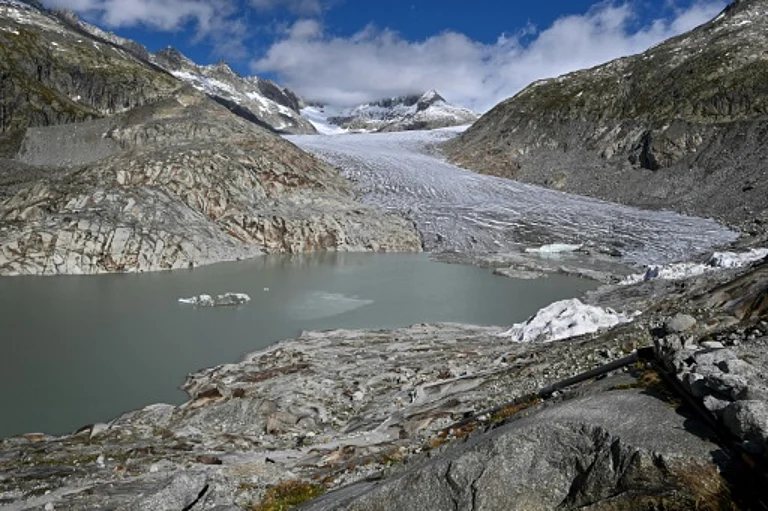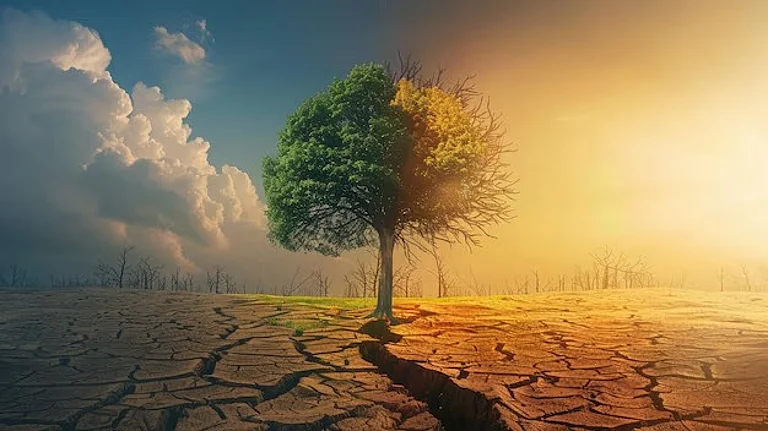Flash floods and multiple cloudbursts triggered by relentless monsoon rains over the past 32 hours in Himachal Pradesh’s Mandi district have lashed the hill state, claiming at least 10 lives and 34 missing in rain-related incidents including flash floods, drowning and electrocution, reported ANI.
Cloudbursts, Floods and Extreme Weather: Why Are Natural Disasters Rising in India?
Himachal battles deadly cloudbursts as experts blame climate change, fragile development
A total of 51 deaths has been reported so far due to multiple causes including flash floods, drowning, landslides, lightning strikes and road accidents. The number of missing persons currently stands at 22, with Mandi district reporting the highest—10 deaths and all 34 missing persons—primarily due to flash floods and cloudbursts, the State Emergency Operation Centre (SEOC) report revealed.
Experts warn that such disasters reflect the compounding effects of climate change and unplanned development in fragile mountainous ecosystems.
The Science Behind Cloudbursts
The India Meteorological Department (IMD) defines a cloudburst as an instance of heavy rainfall when the amount of rainfall received over very small areas (20–30 sq km) exceeds 10 cm or 100 mm in one hour. Mountainous regions are more prone to cloudbursts due to orographic lift.
When moisture-rich air travels up a mountainous region, it forms a vertical column of clouds known as cumulonimbus clouds. These clouds usually cause rain, thunder and lightning. This upward movement of clouds, also called orographic lift, causes unstable clouds and heavy rainfall over a small area.
Cloudbursts are a common occurrence in Himalayan regions with extreme weather events causing further destruction. According to a 2023 report by The Hindu, a cloudburst followed by flash floods drowned nearly a dozen villages in Kulgam, filling homes with mud and washing away cattle. In 2022, cloudbursts caused flash floods during an annual Hindu pilgrimage to a Himalayan mountain cave in southern Kashmir, causing 16 deaths.
In 2010, dozens of villages and the main town of Leh in Ladakh were hit by the worst floods in its recent history. The disaster devastated homes and farm fields in the region and killed over 250 people, reported Phys.org.
Experts attribute the rise in cloudbursts partly to climate change and partly to unplanned development in mountain regions.
Anand Sharma, a retired meteorologist with the India Meteorological Department, told The Hindu, “Global warming is leading to more evaporation of water and because of this dense cumulonimbus clouds are forming, resulting in intense rainfall.” While some regions receive intense rainfall, he said global warming is resulting in prolonged droughts in other regions.
Due to their specific nature, most cloudbursts remain unobserved and unreported. A lack of real-time data means India does not yet have a cloudburst-prone map.
With limited information on the spatial distribution and controls on extreme rainfall events in the complex hilly terrain, government agencies face enormous challenges in managing and preparing for such events.
Is Climate Change Driving Extreme Events?
According to a 2022 Science Direct study, extreme rainfall over the central Himalayas during the early monsoon period results from the interaction between the south-west monsoon and western disturbances.
Experts suggest that the frequent occurrence of extreme events in the Himalayas may be linked to climate change. The report also stated that the Upper Ganga basin is frequently experiencing natural disasters such as flash floods and landslides from extreme rainfall, which causes massive human fatalities, loss of livelihood and infrastructure damage.
Response and the Road Ahead
Chief Minister Sukhvinder Singh Sukhu, who visited the disaster-hit Syathi village in Dharampur, announced a special relief package to assist in rebuilding damaged homes, reported PTI.
He also announced that enhanced compensation will be provided for lost livestock and destroyed cow shelters.
Reports say that two teams from the National Disaster Response Force (NDRF) and the State Disaster Response Force (SDRF) alongside police and home guards are actively engaged in search and rescue operations in the district.
According to Himalaya Niti Abhiyan [a collective of grass root people’s resistance defending local livelihoods, environment and social equity], 332 people have been evacuated so far, including 278 from Mandi district. Among the evacuees were 16 people (12 children and four women) from Jayuni Khad and seven families from Riki village. Police teams have reached Pandavashila from Janjheli while SDRF personnel have arrived in Bagsyad.
However, rescue operations face enormous challenges, particularly due to the complete collapse of access routes.
As climate risks mount, experts stress the need for stronger adaptation strategies including early-warning systems, climate-resilient development practices and improved preparedness to reduce the impact of such extreme weather events in the future.


